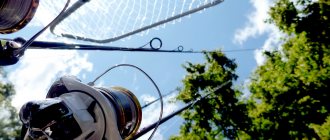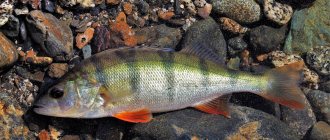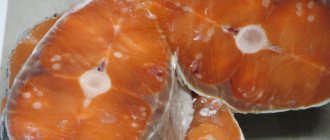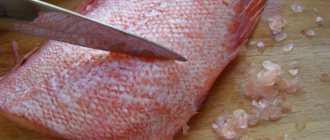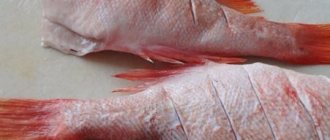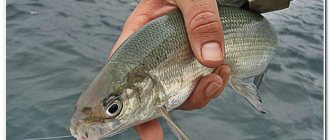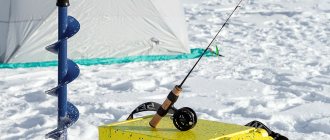A jig is a type of oscillating spoon used in vertical fishing. Initially, the bait was developed for sea fishing at great depths. Jigs are used for garfish, cod, horse mackerel and other bottom inhabitants. This is an extremely effective “blank” that allows you to catch fish in any conditions.
Over time, the lightest jigs for sea fishing migrated to the boxes of spinning anglers fishing in freshwater reservoirs. They turned out to be unusually productive, and therefore deservedly took a leading position in fishing for some predatory fish species. The asp jig is especially popular among domestic spinning fans. In fact, this is the main bait used on our rivers to hunt for this representative of the ichthyofauna.
Features and types of jigs
In the classical sense, a jig is a heavy, narrow-bodied spoon, the ratio of length to width is about 6:1. Many models have a round, hexagonal, rectangular or square section. The weight of the bait is decent, allowing you to quickly deepen it and keep it in the fishing zone, regardless of the strength of the current.
This category of baits is widely represented on the market. However, many models have a high cost, so anglers make jigs with their own hands, giving them the necessary characteristics, adapting them to specific fishing conditions and types of predatory fish.
Broadly speaking, the category of artificial lures “pilker” includes diverse narrow-bodied oscillating spoons. They can be divided into the following groups:
- Narrow-bodied spoons with a slight bend in the tail. This type of bait is most popular in sea fishing. Prominent representatives are jigs for cod, halibut and other bottom inhabitants.
- “Blank” with a weighted upper part. Such spinners have an attractive game when moving in steps. The most popular of this group are jigs for pike perch, which today are often used in a variety of freshwater bodies.
- A jig made from a cross-section of a metal rod of any shape. The most famous representative of this group is the Castmaster - a universal, phenomenally catchable spoon, once invented by the fishing company Acme.
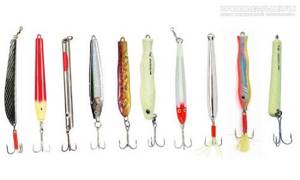
Sea jigs have a weight that can even reach a kilogram. They are not suitable for use in freshwater bodies. But small models of these spinners have taken great root among spinners and are used on rivers, reservoirs and lakes, catching asp, perch, pike perch, catfish and pike. For example, any jig for horse mackerel that allows you to successfully hunt for it in the water column will be suitable in closed reservoirs.
Advice! In the rivers and lakes of our climate zone, the most acceptable jigs are baits weighing 15–40 grams and no more than 7–8 cm long. In some cases, the size of the spoon can be increased or, conversely, reduced.
Fishing with a jig has its advantages:
- The ability to make ultra-long casts, fishing promising areas remote from the shore, when fishing from a boat is impossible or the predator is at a considerable distance from the spinner. This advantage of the bait plays a key role in fishing for asp.
- Different techniques for animating the spinner in any horizon are allowed.
- The bait is suitable for almost all types of fish inhabiting our water bodies.
- It is possible to make jigs with your own hands from scrap materials. The simplest spinner can be made from a rod of non-ferrous metal by simply cutting it at an angle. Nobody limits the fisherman’s imagination; he can come up with any shapes for jigs, as long as the bait works.
Fishing with jigs is problematic in difficult conditions. It is not suitable for snags or areas heavily overgrown with algae.
Where and when to catch horse mackerel
The population of horse mackerel is large in the Black Sea.
This schooling fish, as a rule, stays in the water column at not too great depths and actively moves, hunting for small fish, which constitute the most important part of the horse mackerel’s diet.
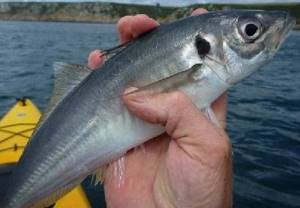
Of course, it can be caught from the shore, but fishing from a boat at a distance of 1-2 km from the shore will be more effective and interesting.
Horse mackerel is caught well in May-June, and the best time to hunt this sea fish is the end of summer and beginning of autumn.
It is in August-September that large flocks of horse mackerel are located close to the coastline and actively feed. Until mid-autumn, you should look for fish primarily in areas with sharp changes in depth, but still close to the shore.
When searching for a school of fish, you can focus on a cluster of birds that feed on horse mackerel, or simply follow where other fishermen are already successfully catching. With the gradual arrival of winter cold, the fish drops lower and often stands at a depth of 60-80 m.
How to fish with jigs?
In the usual view of a spinning player, a jig does not have a game as such. This allows you to use the bait in a variety of situations, regardless of the fishing horizon, the strength of the current and other factors affecting the performance of the spoon. Such oscillators are considered universal and allow various wiring methods, the main of which are:
- uniform;
- wavy;
- stepped.
Depending on the type of predator, fishing season and its behavior, the angler must select the optimal fishing technique to encourage the fish to attack the bait.
Catching asp with a jig is possible throughout the open water season. It enthusiastically responds to bait, which in shape and movement resembles bleak or small chub, which are the main food item of this predator.
In the summer, the sheresper hunts close to the surface, so the bait should be presented in the upper horizon, imitating a fish running away from pursuit. The retrieving speed should be fast, sometimes you need to speed up the reeling so that the spoon even jumps out of the water. This technique helps convince a cautious predator to take an object that is rapidly escaping from it.
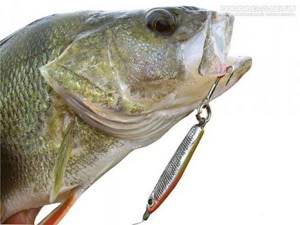
In cold water, the asp sinks down. Often the fish is in the water column, less often it sinks to the very bottom. In this case, the optimal placement of the jig will be a wave-like feed with an average speed of reeling in the fishing line. The second most effective will be uniform wiring in a given horizon. Read more about how to catch asp here.
Catching pike perch with jigs is possible in clean areas. In places with a snag, cluttered or rocky bottom, it is impossible to move the bait without getting caught on an obstacle. The best locations for fishing fanged fish with these spoons are:
- channel riffles;
- extended ditches;
- deep pools and holes;
- sharp drops and slopes.
In terms of productivity, the jig is inferior to the most popular jig baits, silicone, but allows you to qualitatively fish remote areas due to its range and fish vertically, pinpointing promising areas.
Perch really loves this category of bait. For fishing for striped robber, the smallest models weighing from 1 to 10 grams are used. This predator responds well to various guiding techniques, greedily grabbing a tasty object. In addition, these ultralight spinners can be used to catch chub, ide, dace and rudd.
The pike will not let the jig pass by. It is best to use these lures to catch spotted beasts at medium depths in the area of dumps, rifts, humps and other anomalies of the bottom topography. The optimal wiring for a toothy predator would be a classic “step” with minimal pauses at the bottom.
Also, when fishing with jig methods, feeding the bait in the bottom layer, it can be attacked by catfish. The mustachioed giant will not miss the opportunity to feast on easy prey that finds itself in its field of vision. For a targeted hunt for this predator, you can make a homemade jig of increased size and impressive weight in order to more effectively seduce heavier individuals.
Long-cast jig fishing technique
Typically the cast is made from a boat or ship over a distance of more than 30 meters. With such a weight of the bait it is not difficult. In order to control the fall of the bait after it touches the water, the slack in the fishing line tension is removed immediately using a reel. When the tackle sinks, it is useful to gently pull the jig wide and release it with the rod.
It is quite likely that a bite may occur in the water column, and not only after the bait touches the bottom. As soon as you feel the ground touching the ground, you must immediately make a hook, since it is possible that the fish will accompany the jig. In addition, a bite is often mistaken for a jolt on the bottom when falling. This is followed by the usual jig wiring of various variations depending on the tastes of the angler. Twitching followed by pulling along the bottom is quite effective.
The ideal weather for jig fishing is with a wind force of 3-5 m/s. In such conditions, you can fish without reeling in the fishing line, since the speed of the vessel's drift is sufficient for jigging. When the wind exceeds 5 m/s, a water anchor-parachute is used. The weight of the jig is selected based on the duration of the pause (usually 5-8 seconds) between touching the bottom (at a distance of 30 to 50 meters). A good effect in fishing with a jig is when it hangs when lowered to the ground for a long time. When, when casting with a jig, the duration of the pause between touching the bottom exceeds the usual time interval or they are absent altogether, then it is necessary to smoothly lower the rod forward until the jig contacts the ground. At such a moment a bite usually occurs. While reeling in the fishing line, the pauses between touching the bottom with the bait are reduced. As soon as they reach 1-2 seconds, you should collect the line and make a new cast. There are also rare bites directly under the boat, but in this case small fish are usually caught.
It is worth paying attention to the advisability of long casting from a boat, since the fish are already under it. The fact is that in this case, the meaning of this technique lies in the correct operation of the tackle, achieved from the parachute effect of the cord, selection of the mass of the jig and the optimal casting length at a certain wind force. In addition, when using long casting it is possible to catch several times more fish than when fishing vertically.
Fishing for garfish.
Many fishermen believe that hunting for garfish is a popular fishing activity. Well, since fishing was a thing, my friend and I decided to go look for garfish on the “bridge” behind the treatment facilities. Since the forecast for today promised a weak wind (2-3m/s), I decided to take with me a long-range set for “heavy” jigs, from 15g to 20g. This is an AIKO Arsenal ARS892ML spinning rod (2.7m; 4-24g) and a new Stinger INNOVA 2000 (2021 model), which I became the proud owner of just yesterday.
I'll say a few words about the coil. This is the fourth Stinger reel I have purchased. Now the Stinger Enforcer 1500 light and medium-light kits continue to work flawlessly for me, and the other two reels Stinger Enforcer 3500 and Stinger Priority 2500 continue to delight my colleagues without fail, because I took them under HRF (Hard Rock Fishing) and switched to casting gear in this type of fishing. But when I saw the new 2021 Stinger INNOVA, I just couldn’t resist, I really liked the reel from a technical point of view. Taking into account personal experience with these reels, their reliability, build quality, excellent work with thin cords - in almost three years of operation, with proper maintenance, not a single breakdown, not a single “beard” even on hard twitching. And then I went to the store for “fresh” jigs, and it was lying on the counter and the size was just mine, so I couldn’t resist. In short, I wound a baked Berkley FireLine Crystal Competition 0.074mm cord onto the spool and tested the kit for casting distance.
The result is:
“Novorossiysk” jig 15g - up to 110-112 revolutions of the reel handle (65cm per revolution);
Hayabusa JE SHOT 20g - up to 120-122 revolutions of the reel handle (65cm per revolution).
Of course, such an “outstanding” result is due to the “throwing” spinning rod and thin smooth cord, but the reel also added a decent range - a patented spool to increase the casting distance (the side of the spool is like Shimano’s, but smoother and rounded), plus a cross and perfectly straight cord laying.
In short, we didn’t find any garfish at the wastewater treatment plant; the entire “paddling pool” in front of the treatment plant, right down to the very bottom, is very tightly packed with jellyfish, the water is like jelly. We returned to the Massandra beaches. I hung up a “fresh” still uncaught “Novorossiysk” 15g jig and we continued.
And at exactly 11.30, at least check your watch, and this is already statistics, the garfish hatched. In those few minutes, while a flock of garfish rushed in front of us, I managed to grab several things. A friend also grabbed a Russian Spinner RB Roxi 19.4g on a long cast jig.
By lunchtime a southwest wind picked up and we had to turn around. The fishing was successful, I caught a new reel and “fresh” jigs, and my friend caught his favorite jig.
NHNCH!
PS
Zhenya promised to post photos “from the scene of events”.
